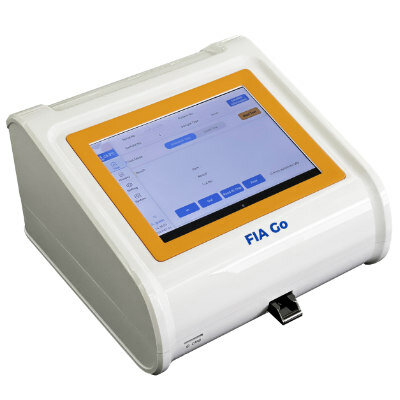Vitamin D Deficiency Linked to Metabolic Changes in Lupus Patients
|
By LabMedica International staff writers Posted on 15 Apr 2021 |

Image: Lower vitamin D levels are associated with metabolic syndrome and insulin resistance in systemic lupus (Photo courtesy of Nikki Yelton, RD)
Systemic lupus erythematosus (SLE), is the most common type of lupus. SLE is an autoimmune disease in which the immune system attacks its own tissues, causing widespread inflammation and tissue damage in the affected organs. It can affect the joints, skin, brain, lungs, kidneys, and blood vessels.
Metabolic syndrome is a cluster of conditions that occur together, increasing the risk of heart disease, stroke and type 2 diabetes. These conditions include increased blood pressure, high blood sugar, excess body fat around the waist, and abnormal cholesterol or triglyceride levels. Metabolic syndrome is increasingly common, and up to one-third of adults in the USA have it.
A large team of immunologists and their international colleagues working with the University of Birmingham (Birmingham, UK) examined vitamin D levels in 1,163 patients with SLE across 33 centers in 11 countries. Clinical, laboratory and therapeutic data were collected. Vitamin D level was defined according to tertiles based on distribution across this cohort, which were set at T1 (10–36 nmol/L), T2 (37–60 nmol/L) and T3 (61–174 nmol/L). Metabolic syndrome was defined according to the 2009 consensus statement from the International Diabetes Federation. Insulin resistance was determined using the Homeostatic Model Assessment of Insulin Resistance (HOMA-IR) model. Linear and logistic regressions were used to assess the association of variables with vitamin D levels.
The team reported that of the 1,847 patients, 1,163 (63%) had vitamin D measured and 398 (34.2%) subjects were in the lowest 25(OH)D tertile. Metabolic syndrome was present in 286 of 860 (33%) patients whose status could be determined. Patients with lower 25(OH)D were more likely to have metabolic syndrome and higher HOMA-IR. The metabolic syndrome components, hypertension, hypertriglyceridemia and decreased high-density lipoprotein (HDL) were all significantly associated with lower 25(OH)D. Increased average glucocorticoid exposure was associated with higher insulin resistance.
John A. Reynolds, MD, a Consultant Rheumatologist and a senior author of the study. said, “Our results suggest that co-existing physiological abnormalities may contribute to long-term cardiovascular risk early on in systemic lupus erythematosus. We found a link between lower levels of vitamin D and metabolic syndrome and insulin resistance.”
The authors concluded that metabolic syndrome and insulin resistance are associated with lower vitamin D in patients with SLE. Further studies could determine whether vitamin D repletion confers better control of these cardiovascular risk factors and improve long-term outcomes in SLE. The study was published originally published on February 8, 2021 in the journal Rheumatology.
Related Links:
University of Birmingham
Metabolic syndrome is a cluster of conditions that occur together, increasing the risk of heart disease, stroke and type 2 diabetes. These conditions include increased blood pressure, high blood sugar, excess body fat around the waist, and abnormal cholesterol or triglyceride levels. Metabolic syndrome is increasingly common, and up to one-third of adults in the USA have it.
A large team of immunologists and their international colleagues working with the University of Birmingham (Birmingham, UK) examined vitamin D levels in 1,163 patients with SLE across 33 centers in 11 countries. Clinical, laboratory and therapeutic data were collected. Vitamin D level was defined according to tertiles based on distribution across this cohort, which were set at T1 (10–36 nmol/L), T2 (37–60 nmol/L) and T3 (61–174 nmol/L). Metabolic syndrome was defined according to the 2009 consensus statement from the International Diabetes Federation. Insulin resistance was determined using the Homeostatic Model Assessment of Insulin Resistance (HOMA-IR) model. Linear and logistic regressions were used to assess the association of variables with vitamin D levels.
The team reported that of the 1,847 patients, 1,163 (63%) had vitamin D measured and 398 (34.2%) subjects were in the lowest 25(OH)D tertile. Metabolic syndrome was present in 286 of 860 (33%) patients whose status could be determined. Patients with lower 25(OH)D were more likely to have metabolic syndrome and higher HOMA-IR. The metabolic syndrome components, hypertension, hypertriglyceridemia and decreased high-density lipoprotein (HDL) were all significantly associated with lower 25(OH)D. Increased average glucocorticoid exposure was associated with higher insulin resistance.
John A. Reynolds, MD, a Consultant Rheumatologist and a senior author of the study. said, “Our results suggest that co-existing physiological abnormalities may contribute to long-term cardiovascular risk early on in systemic lupus erythematosus. We found a link between lower levels of vitamin D and metabolic syndrome and insulin resistance.”
The authors concluded that metabolic syndrome and insulin resistance are associated with lower vitamin D in patients with SLE. Further studies could determine whether vitamin D repletion confers better control of these cardiovascular risk factors and improve long-term outcomes in SLE. The study was published originally published on February 8, 2021 in the journal Rheumatology.
Related Links:
University of Birmingham
Latest Clinical Chem. News
- 3D Printed Point-Of-Care Mass Spectrometer Outperforms State-Of-The-Art Models
- POC Biomedical Test Spins Water Droplet Using Sound Waves for Cancer Detection
- Highly Reliable Cell-Based Assay Enables Accurate Diagnosis of Endocrine Diseases
- New Blood Testing Method Detects Potent Opioids in Under Three Minutes
- Wireless Hepatitis B Test Kit Completes Screening and Data Collection in One Step
- Pain-Free, Low-Cost, Sensitive, Radiation-Free Device Detects Breast Cancer in Urine
- Spit Test Detects Breast Cancer in Five Seconds
- Electrochemical Sensors with Next-Generation Coating Advances Precision Diagnostics at POC
- First-Of-Its-Kind Handheld Device Accurately Detects Fentanyl in Urine within Seconds
- New Fluorescent Sensor Array Lights up Alzheimer’s-Related Proteins for Earlier Detection
- Automated Mass Spectrometry-Based Clinical Analyzer Could Transform Lab Testing
- Highly Sensitive pH Sensor to Aid Detection of Cancers and Vector-Borne Viruses
- Non-Invasive Sensor Monitors Changes in Saliva Compositions to Rapidly Diagnose Diabetes
- Breakthrough Immunoassays to Aid in Risk Assessment of Preeclampsia
- Urine Test for Monitoring Changes in Kidney Health Markers Can Predict New-Onset Heart Failure
- AACC Releases Comprehensive Diabetes Testing Guidelines
Channels
Molecular Diagnostics
view channel
Unique Autoantibody Signature to Help Diagnose Multiple Sclerosis Years before Symptom Onset
Autoimmune diseases such as multiple sclerosis (MS) are thought to occur partly due to unusual immune responses to common infections. Early MS symptoms, including dizziness, spasms, and fatigue, often... Read more
Blood Test Could Detect HPV-Associated Cancers 10 Years before Clinical Diagnosis
Human papilloma virus (HPV) is known to cause various cancers, including those of the genitals, anus, mouth, throat, and cervix. HPV-associated oropharyngeal cancer (HPV+OPSCC) is the most common HPV-associated... Read moreHematology
view channel
Next Generation Instrument Screens for Hemoglobin Disorders in Newborns
Hemoglobinopathies, the most widespread inherited conditions globally, affect about 7% of the population as carriers, with 2.7% of newborns being born with these conditions. The spectrum of clinical manifestations... Read more
First 4-in-1 Nucleic Acid Test for Arbovirus Screening to Reduce Risk of Transfusion-Transmitted Infections
Arboviruses represent an emerging global health threat, exacerbated by climate change and increased international travel that is facilitating their spread across new regions. Chikungunya, dengue, West... Read more
POC Finger-Prick Blood Test Determines Risk of Neutropenic Sepsis in Patients Undergoing Chemotherapy
Neutropenia, a decrease in neutrophils (a type of white blood cell crucial for fighting infections), is a frequent side effect of certain cancer treatments. This condition elevates the risk of infections,... Read more
First Affordable and Rapid Test for Beta Thalassemia Demonstrates 99% Diagnostic Accuracy
Hemoglobin disorders rank as some of the most prevalent monogenic diseases globally. Among various hemoglobin disorders, beta thalassemia, a hereditary blood disorder, affects about 1.5% of the world's... Read moreImmunology
view channel
Diagnostic Blood Test for Cellular Rejection after Organ Transplant Could Replace Surgical Biopsies
Transplanted organs constantly face the risk of being rejected by the recipient's immune system which differentiates self from non-self using T cells and B cells. T cells are commonly associated with acute... Read more
AI Tool Precisely Matches Cancer Drugs to Patients Using Information from Each Tumor Cell
Current strategies for matching cancer patients with specific treatments often depend on bulk sequencing of tumor DNA and RNA, which provides an average profile from all cells within a tumor sample.... Read more
Genetic Testing Combined With Personalized Drug Screening On Tumor Samples to Revolutionize Cancer Treatment
Cancer treatment typically adheres to a standard of care—established, statistically validated regimens that are effective for the majority of patients. However, the disease’s inherent variability means... Read moreMicrobiology
view channel
Mouth Bacteria Test Could Predict Colon Cancer Progression
Colon cancer, a relatively common but challenging disease to diagnose, requires confirmation through a colonoscopy or surgery. Recently, there has been a worrying increase in colon cancer rates among younger... Read more.jpg)
Unique Metabolic Signature Could Enable Sepsis Diagnosis within One Hour of Blood Collection
Sepsis is a life-threatening condition triggered by an extreme response of the body to an infection. It requires immediate medical intervention to prevent potential death or lasting damage.... Read morePathology
view channel
Spatial Tissue Analysis Identifies Patterns Associated With Ovarian Cancer Relapse
High-grade serous ovarian carcinoma is the most lethal type of ovarian cancer, and it poses significant detection challenges. Typically, patients initially respond to surgery and chemotherapy, but the... Read more.jpg)
Unique Hand-Warming Technology Supports High-Quality Fingertip Blood Sample Collection
Warming the hand is an effective way to facilitate blood collection from a fingertip, yet off-the-shelf solutions often do not fulfill laboratory requirements. Now, a unique hand-warming technology has... Read moreTechnology
view channel
New Diagnostic System Achieves PCR Testing Accuracy
While PCR tests are the gold standard of accuracy for virology testing, they come with limitations such as complexity, the need for skilled lab operators, and longer result times. They also require complex... Read more
DNA Biosensor Enables Early Diagnosis of Cervical Cancer
Molybdenum disulfide (MoS2), recognized for its potential to form two-dimensional nanosheets like graphene, is a material that's increasingly catching the eye of the scientific community.... Read more
Self-Heating Microfluidic Devices Can Detect Diseases in Tiny Blood or Fluid Samples
Microfluidics, which are miniature devices that control the flow of liquids and facilitate chemical reactions, play a key role in disease detection from small samples of blood or other fluids.... Read more
Breakthrough in Diagnostic Technology Could Make On-The-Spot Testing Widely Accessible
Home testing gained significant importance during the COVID-19 pandemic, yet the availability of rapid tests is limited, and most of them can only drive one liquid across the strip, leading to continued... Read moreIndustry
view channel
ECCMID Congress Name Changes to ESCMID Global
Over the last few years, the European Society of Clinical Microbiology and Infectious Diseases (ESCMID, Basel, Switzerland) has evolved remarkably. The society is now stronger and broader than ever before... Read more
Bosch and Randox Partner to Make Strategic Investment in Vivalytic Analysis Platform
Given the presence of so many diseases, determining whether a patient is presenting the symptoms of a simple cold, the flu, or something as severe as life-threatening meningitis is usually only possible... Read more
Siemens to Close Fast Track Diagnostics Business
Siemens Healthineers (Erlangen, Germany) has announced its intention to close its Fast Track Diagnostics unit, a small collection of polymerase chain reaction (PCR) testing products that is part of the... Read more
















